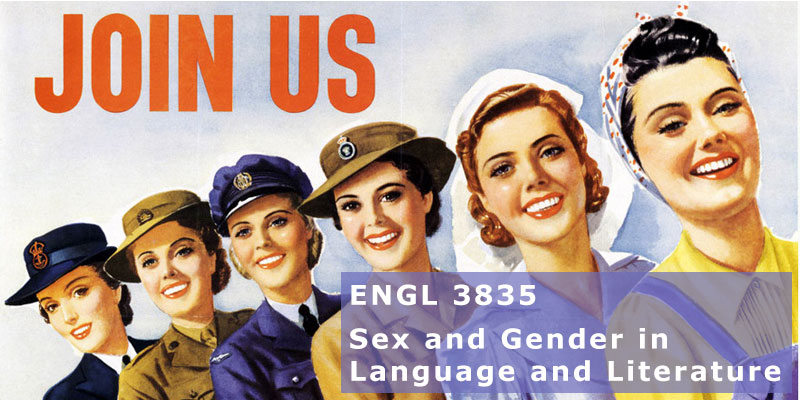Catalog Description
Prerequisites: Completion of Blocks A and B4, an additional course from Block B, and at least one course each from Blocks C and D. Analysis of concepts of sex, gender as experienced in language and literature. Comparative language behavior of women and men as revealed in research on communication and in representative literary works, both classical and modern. UD GE C (d)
Learning Outcomes
Upon completion of this course, students will be able to:
- Demonstrate the ability to summarize the plots and literary innovations of important contemporary novels by prize-winning authors
- Demonstrate the ability to think critically about gender and sexual identities as they are lived, with contradiction and conflict, within late capitalist, media-driven cultures
- Analyze fictional forms, particularly narrative structure
- Demonstrate the ability to connect contemporary fiction, research, and high-profile world events through both speaking and writing
- Demonstrate knowledge of gender construction and expression as products of socializing agents, and discourse
- Analyze research on communication and gender and demonstrate the ability to understand intersectional approaches to identity construction, interaction, and maintenance
Course Outline
Topic 1: Communication, Culture and Gender Development
- What is gender?
- How does gender develop in relation to other social identities and others?
- Through which socializing agents are we taught to embody, or suppress our social identities?
- Why is gender treated as binary? Historical and cultures representations of third genders
- How do intersections of culture, religion, and social class impact gender?
Topic 2: Women’s & Men’s Movements in the U.S.
- Historical overview beginning with suffragists
- How does hegemonic masculinity impact gender development? How do race, social class, and sexuality impact, stall or propel these movements?
- What are both movements now?
Topic 3: Gendered Verbal & Nonverbal Communication
- How can words be gendered?
- What are the differences in nonverbal behaviors between genders?
- How do gendered behaviors become normalized? Racialized? Classed?
Topic 4: Becoming Gendered, Gendered Education, and Gendered Relationships
- How is gender socialization reinforced and resisted?
- How does student experience in K-12 and in higher education differ based on gender, race, and social class?
- How are our relationships gendered, raced, and classed?
Topic 5: Gendered Media
- Problematic media representations
- How do gendered discourses become problematic?
Topic 6: Gendered Organizational Communication
- Glass ceiling, (Racialized) glass escalator, glass cliff, and glass slipper
- Occupational segregation: pink and blue-collar work
Topic 7: Gendered Power and Violence
- Why is gender-based violence so prevalent?
- How does hegemonic masculinity play a role in violence?
- What is being done to prevent gender-based violence?
About the Banner: "Join Us for a Victory Job," Home front propaganda poster, Australia, 1942 (image from http://en.wikipedia.org/wiki/Martha#/media/File:Diego_Vel%C3%A1zquez_008.jpg)
